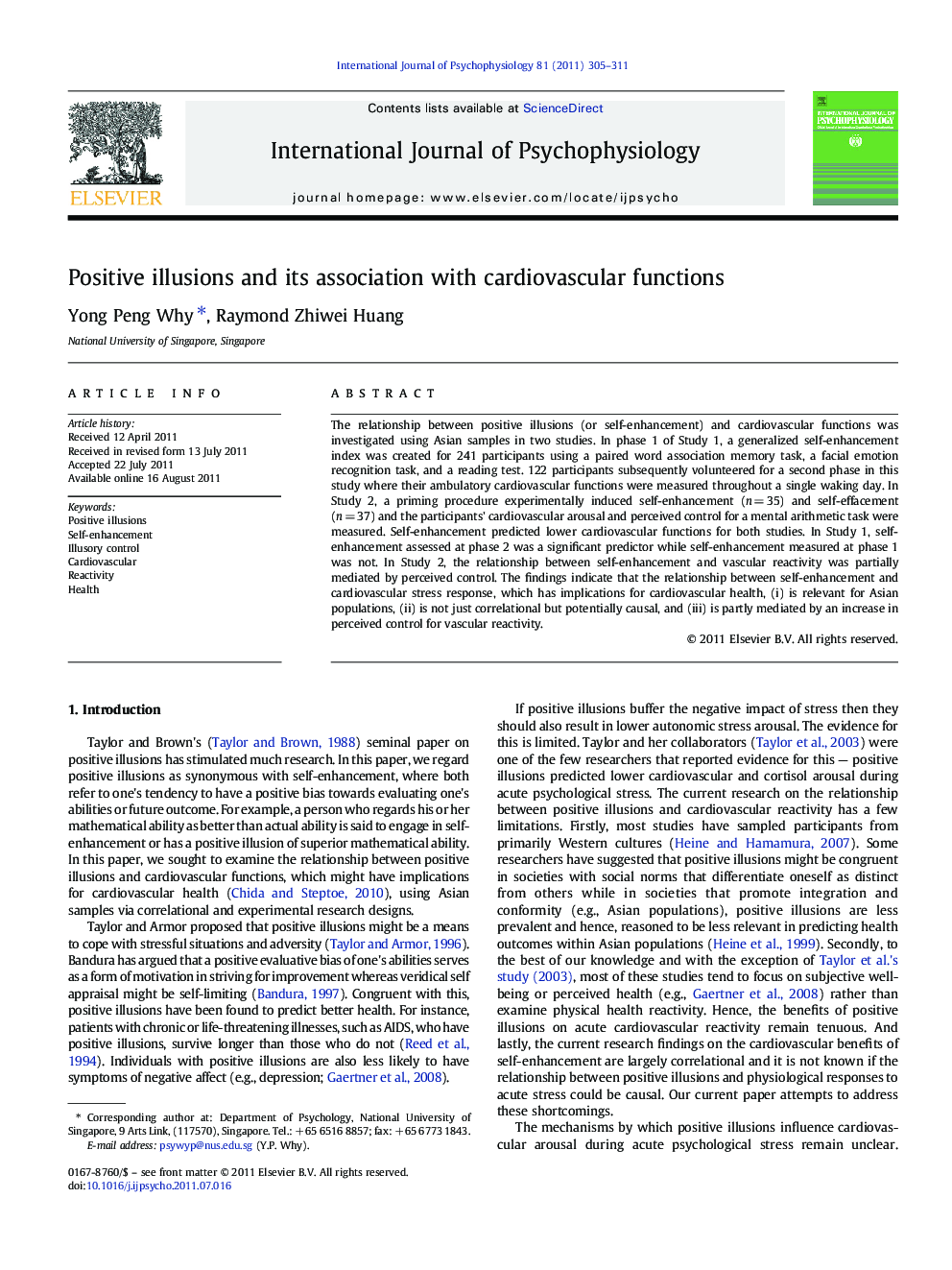| کد مقاله | کد نشریه | سال انتشار | مقاله انگلیسی | نسخه تمام متن |
|---|---|---|---|---|
| 930608 | 1474451 | 2011 | 7 صفحه PDF | دانلود رایگان |

The relationship between positive illusions (or self-enhancement) and cardiovascular functions was investigated using Asian samples in two studies. In phase 1 of Study 1, a generalized self-enhancement index was created for 241 participants using a paired word association memory task, a facial emotion recognition task, and a reading test. 122 participants subsequently volunteered for a second phase in this study where their ambulatory cardiovascular functions were measured throughout a single waking day. In Study 2, a priming procedure experimentally induced self-enhancement (n = 35) and self-effacement (n = 37) and the participants' cardiovascular arousal and perceived control for a mental arithmetic task were measured. Self-enhancement predicted lower cardiovascular functions for both studies. In Study 1, self-enhancement assessed at phase 2 was a significant predictor while self-enhancement measured at phase 1 was not. In Study 2, the relationship between self-enhancement and vascular reactivity was partially mediated by perceived control. The findings indicate that the relationship between self-enhancement and cardiovascular stress response, which has implications for cardiovascular health, (i) is relevant for Asian populations, (ii) is not just correlational but potentially causal, and (iii) is partly mediated by an increase in perceived control for vascular reactivity.
► Positive illusions predicted lower ambulatory cardiovascular functions.
► Inducing positive illusions resulted in lower cardiovascular reactivity.
► Perceived control is a mediator for positive illusions and vascular reactivity.
Journal: International Journal of Psychophysiology - Volume 81, Issue 3, September 2011, Pages 305–311